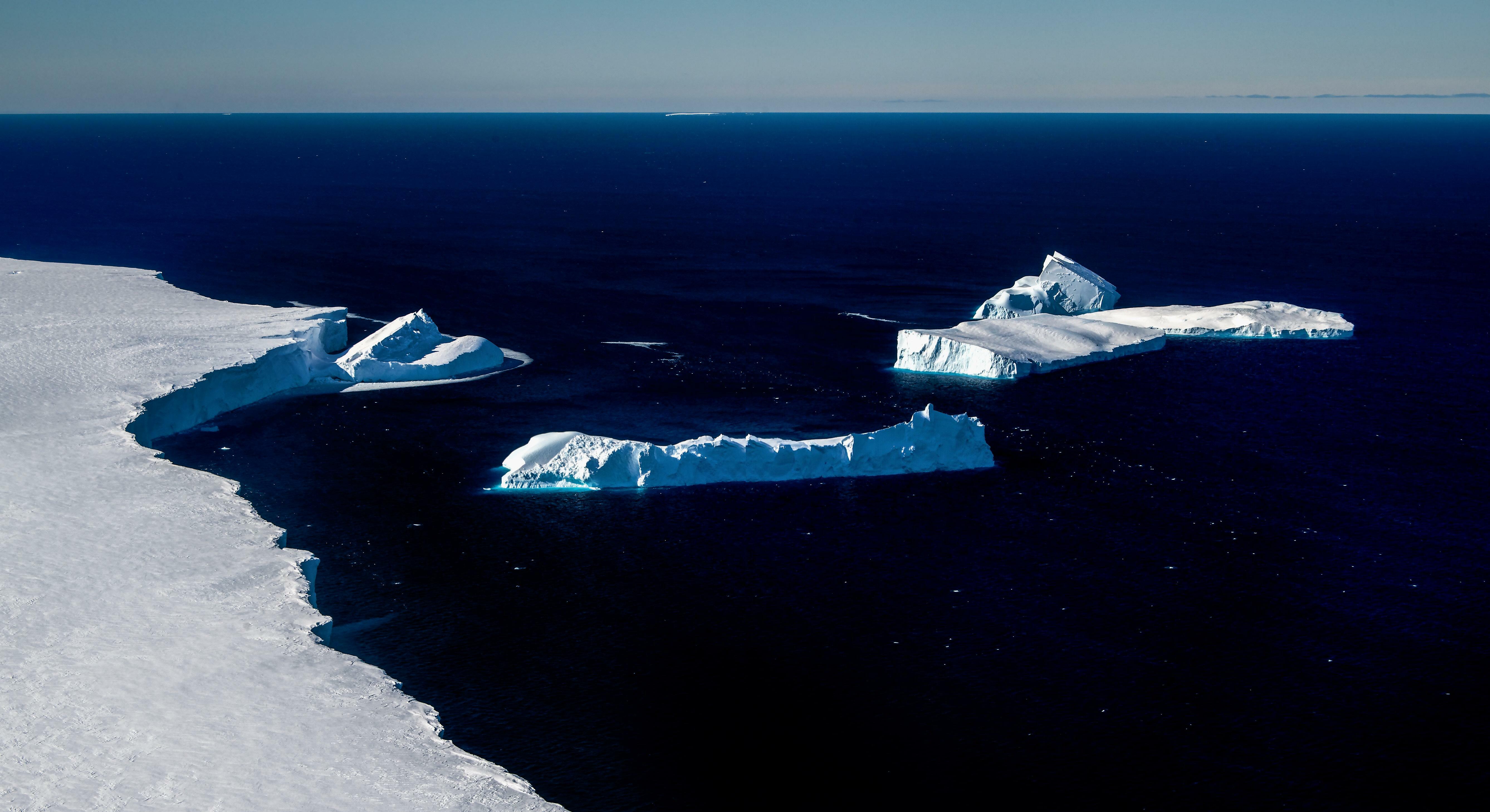THE GLACIER RESCUE PROJECT
The Atlantic
|July - August 2024
Can the mighty Thwaites be stopped from tumbling into the sea?

THE EDGE OF GREENLAND'S ICE SHEET looked like a big lick of sludgy white frosting spilling over a rise of billion-year-old brown rock. Inside the Twin Otter's cabin, there were five of us: two pilots, a scientist, an engineer, and me. Farther north, we would have needed another seat for a rifle-armed guard. Here, we were told to just look around for polar-bear tracks on our descent. We had taken off from Greenland's west coast and soon passed over the ice sheet's lip. Viewed from directly above, the first 10 miles of ice looked wrinkled, like elephant skin. Its folds and creases appeared to be lit blue from within.
We landed 80 miles into the interior with a swervy skid. Our engineer, a burly Frenchman named Nicolas Bayou, jerked the door open, and an unearthly cold ripped through the cabin. The ice was smoother here. The May sunlight radiated off it like a pure-white aurora. We knew that there were no large crevasses near the landing site. This was a NASA mission. We had orbital reconnaissance. Still, our safety officer had warned us that we could "pop down" into a hidden crack in the ice if we ventured too far from the plane. Bayou appointed himself our Neil Armstrong. He unfolded the ladder, stepped gingerly down its rungs, and set foot on the surface.
Over the next hour and a half, we drilled 15 feet into the mile-thick ice. We fed a long pole topped by a solar-powered GPS receiver into the hole and stood it straight up. In the ensuing days, we were scheduled to set up four identical sites in a long line, the last one near Greenland's center. Each will help calibrate a $1.5 billion satellite, known as NISAR, that NASA has been building with the Indian Space Research Organisation. After the satellite launches from the Bay of Bengal, its radar will peer down at Earth's glaciers-even at night, even in stormy weather. Every 12 days, it will generate an exquisitely detailed image of almost the entirety of the cryosphere-all the planet's ice.
This story is from the July - August 2024 edition of The Atlantic.
Subscribe to Magzter GOLD to access thousands of curated premium stories, and 10,000+ magazines and newspapers.
Already a subscriber? Sign In
MORE STORIES FROM The Atlantic

The Atlantic
You Had to Be There
An emerging field of history asks if we can ever really understand how our forebears experienced love, anger, fear, and sorrow.
23 mins
January 2026

The Atlantic
By the Horns
The week before the biggest bullfight of her career, in Cádiz, Spain, this past July, 24-year-old Miriam Cabas posted a carefully produced video on Instagram.
1 mins
January 2026

The Atlantic
The New German War Machine
After World War II, Germany embraced pacifism as a form of atonement. Now the country is arming itself again.
18 mins
January 2026
The Atlantic
The Eloquence
The prime minister was watching a disaster movie when we found him.
4 mins
January 2026

The Atlantic
What's for Dinner, Mom?
The women who want to change the way America eats
12 mins
January 2026

The Atlantic
How Terror Works
A 1947 German novel explores the sometimes corrosive, sometimes energizing nature of fear.
8 mins
January 2026

The Atlantic
Yesterday's Idea of a Modern Man
Sam Shepard, a self-made cowboy, was also a poet of masculine angst.
7 mins
January 2026

The Atlantic
ACCOMMODATION NATION
America's colleges have an extra-time-on-tests problem.
11 mins
January 2026

The Atlantic
Respect the Drummer
A new history of rock, told through its overlooked heroes
5 mins
January 2026

The Atlantic
THE MOST POWERFUL MAN IN SCIENCE
WHY IS ROBERT F. KENNEDY JR. SO CONVINCED HE'S RIGHT?
42 mins
January 2026
Listen
Translate
Change font size

